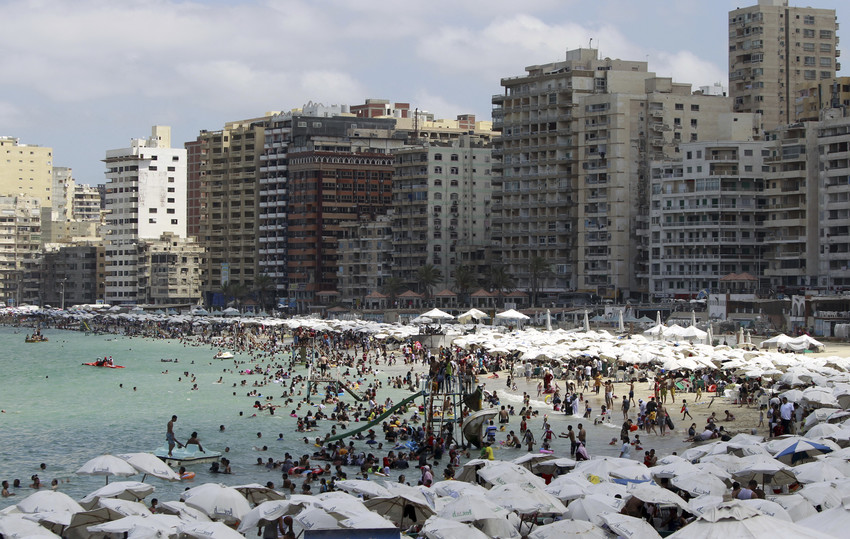Conversations in Egypt about the climate crisis are not as loud as they ought to be. Sea level rise, in specific, is hardly addressed, even though the country is bound to be severely affected. As global warming increases, Egypt’s coastal cities, along with other regions, come under threat.
The images below show what Egypt would face, according to a report by nonprofit organization Climate Central, if carbon emissions result in global temperatures to rise by 2° Celsius, the current international target by 2100, by 3° Celsius, or by 4° Celsius, the temperature forecast if no action is taken to restrict carbon emissions.
Damietta
With a population of over one million, Damietta is where the Nile River meets the Mediterranean Sea. Climate Central estimates that 90 percent of Damietta’s current population lives in areas that would eventually be underwater if the Earth warms by 4°C by 2100.

Alexandria
Egypt’s largest coastal city and second-largest city, Alexandria stretches about 32 km along the coast of the Mediterranean Sea. The city’s low elevation on the Nile delta makes it highly vulnerable to rising sea levels. Following a 4°C warming scenario, 70 percent of Alexandria’s current population would eventually be underwater in 2100.

Al-Mansoura
The state is currently propagating New Mansoura, a fourth generation city it is building on a 15 km strip of the Mediterranean. Yet the rising waters created by a 4°C temperature increase would submerge 65 percent of the Al-Mansoura’s population in 2100.

The Climate Central report indicates that other non-coastal cities like Cairo and Tanta will also be affected.
“We are [already] seeing the effects of sea level rise in the country in the form of soil salinity in the delta and coastal erosion, those two things will lead eventually to food crises and displacement, amongst other economic and social ramifications,” environmental justice researcher Amena Sharaf told InfoTimes.
Egypt comes fourth among top 20 countries most affected by locked-in sea level rise from 4 °C warming, by percent of population, with comparisons to 2 °C warming. Some researches indicate numbers as high as 1.5 million people could be displaced in Egypt, along with a loss of 200,000 jobs, with a 0.5 M sea level rise, Sharaf stated.
In March, Minister of Environment Yasmin Fouad announced a national plan to protect coastal areas.
“There are some ongoing projects, however there’s a lot to be criticized,” said Sharaf. Most coastal adaptation plans are Alexandria-centric so there’s a lot of work to be done on other coastal cities like Ismailia and Suez, she said, adding that a lot of those plans are only carried out in the more touristic parts of Alexandria and the north coast.
“It is important for adaptation plans to be inclusive and fair, the class segmentation of a lot of national projects is very worrying and puts big questions marks on the effectiveness of said plans”, Sharaf believes.
“The Egyptian government needs to address this challenge with the seriousness it requires. Adaptation plans need to be more precise and just in their distribution. Business considerations have to be set aside if Egypt is going to successfully address the threat of sea level rise in a way that protects all Egyptian citizens facing this challenge equally”.
Sharaf stated that lifestyle changes far from enough as a solution to the climate crisis. “The individualistic narrative is as harmful as it is empowering because it rids governments and businesses from their responsibilities. The biggest polluters are companies and governments through industry and wars.”
This piece was originally published on InfoTimes.org and was written by Aya Nader. InfoTimes is a platform that combines data science, information design, and storytelling, forging a digital experience that informs the public on current topics of interest. For data-driven stories, visit infotimes.org
Main image credits: REUTERS/Amr Abdallah Dalsh








Comments (0)